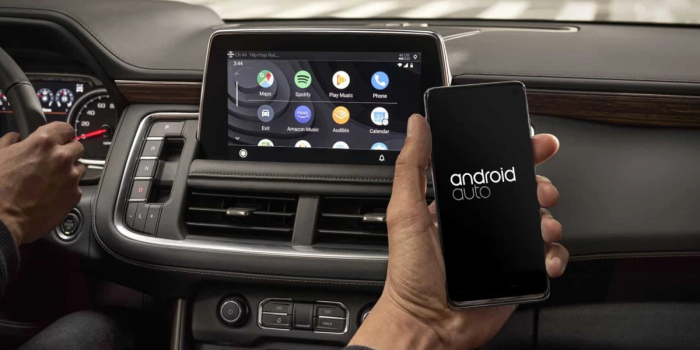General Motors (GM) is an old-school automotive manufacturer, but it also has its finger on the pulse of modern technology.
GM recently got a patent for a novel idea that would benefit drivers and improve the experience of using a smartphone, tablet, or any device with a touchscreen. The patent protects GM’s vision to produce a self-cleaning screen that removes fingerprints, grease, and oil.

Many modern vehicles have a touchscreen panel that drivers can contaminate with their fingertips. Eventually, fingerprints cover the screen. In the worst-case situation, crucial data such as the current range of the vehicle’s battery and when a charging stop is required can become obscured. This is also beneficial for automobiles that have Android Auto or CarPlay.
According to GM’s patent US 11,579,340, titled “Self-cleaning system for displays using light-emitting diodes emitting invisible violet light,” the screen would feature violet pixels that the human eye cannot detect in addition to red, blue, and green pixels. The touchscreen display would also be covered with a photocatalyst that absorbs specific wavelengths of light.

The violet pixels would be employed during a cleaning cycle initiated by the driver during the day or when the car is parked overnight automatically. With the violet pixels, ultraviolet radiation from the sun would activate the photocatalyst in the screen coating, resulting in a chemical reaction that breaks down the organic substance that causes fingerprint smudges on display.

Aside from fingerprints, the technique will also remove oil, grease, and fast food residue from the glass.
As long as the LED displays have the photocatalytic coating and a power supply to turn on the violet micro-LEDs integrated into the LED panel, additional devices can utilize the patent-protected solution. “Computers, mobile devices, kiosks, televisions, kiosks, teller machines, and household appliances” are also mentioned in the patent.
Of course, GM may decide not to use this method as with any patent. But on the other hand, if this is possible, a smartphone manufacturer may license the patent and utilize it on a future smartphone touchscreen.
Source: US Patent Office via Autoevolution.


